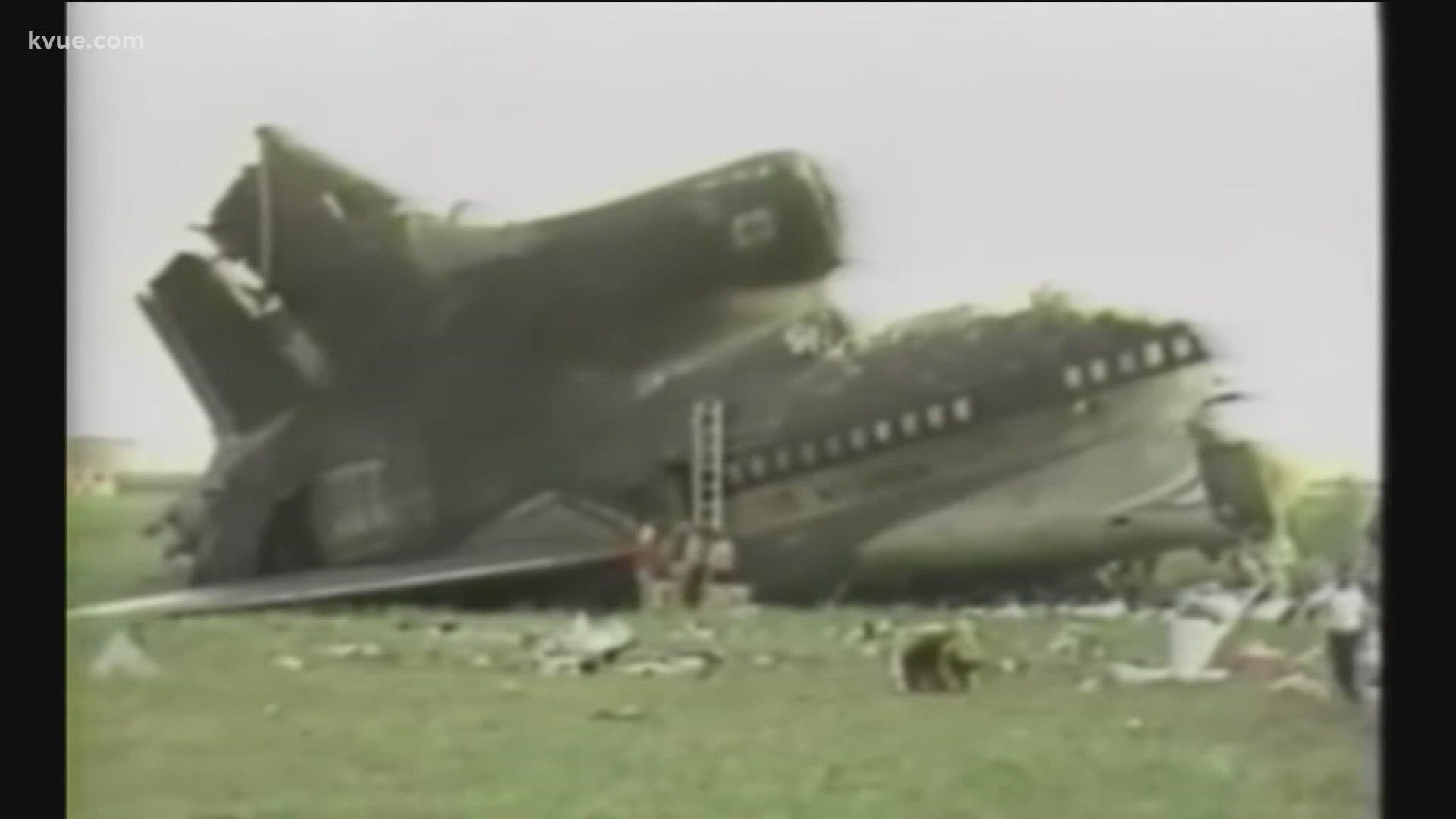DALLAS, Texas — The startling news photos of a huge, charred tail section of a Delta jetliner resting in a field just north of the Dallas-Fort Worth International Airport (DFW) served as a stark reminder of the fury of unpredictable summertime weather. It was Aug. 2, 1985, and the big Lockheed L-1011 jet had crashed short of the runway during a thunderstorm.
As it made its final descent before landing, the plane encountered a weather phenomenon known as a microburst: a downward rush of air that caused the pilots to lose control of the plane. According to investigators, rapidly-changing wind directions known as wind shear and pilot error contributed to the disaster.
The plane struck the ground short of the runway, hit a car on a nearby highway killing the driver, then smashed into a water tower ripping it apart.
The flight had originated in Florida and was to go on to Los Angeles after its brief stopover at DFW. One-hundred thirty-seven people died in the crash, but 28 survived, many of them who had been seated in the rear of the plane that was torn away by the impact of the crash.
The disaster led to major changes for aviation. Now, all commercial aircraft are equipped with wind shear detectors that can warn pilots if dangerous weather conditions exist before landing.
PEOPLE ARE ALSO READING:

